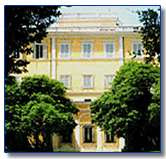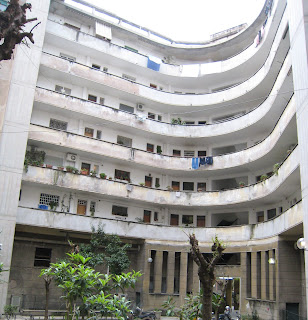The poster reads "Rome Reborn," and it's everywhere in the city, intended to celebrate the first year of Gianni Alemanno's mayoralty. But the poster says more than that. As today's La Repubblica implies, Alemanno's pose--that upraised jaw, the Roman salute (albeit with the left hand)--are suggestive of another right-wing politician, of considerably more fame and infamy. And the flag covering Alemanno's hand is that of the Fiamma Tricolore, not the Italian flag, but that of the Tricolor Flame, a neo-fascist political party that recognizes its debt to the ideas of Benito Mussolini and his Black Shirts.
We would add that Alemanno's position, with the Forum at his back, is another link to Fascism, for it was Mussolini who spearheaded the "sventramento" (demolition, clearance) of precisely that area, in order to associate his regime with the power and glory of imperial Rome.
The poster's pitch is hardly subtle, and we can only assume that there are plenty of Romans who respond with enthusiasm to it--probably the least educated of the electorate, and elements of the Italian working class, exasperated by liberalism's failures and weaknesses and venting their frustrations by abandoning the left. The American working class rejected the Democratic Party in 1968 (electing Richard Nixon), and the "Reagan Democrats" followed suit.
We hope the election of Alemanno doesn't prove to be a signal of the beginning of decades of right-wing dominance.
Bill




